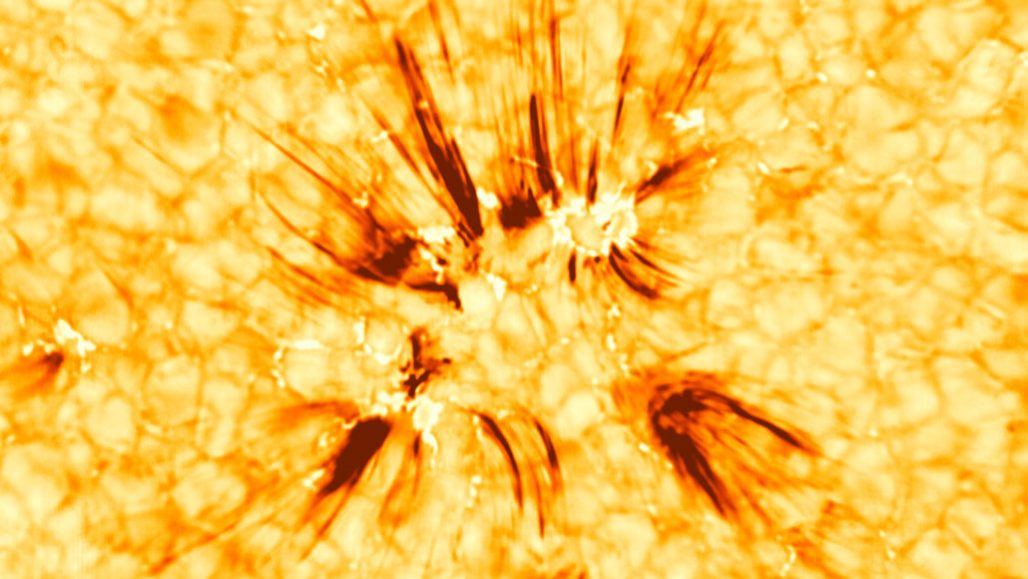astronomer A scientist who performs research involving celestial objects, space and the physical universe.
astrophysics An area of astronomy that deals with understanding the physical nature of stars and other objects in space. People who work in this field are known as astrophysicists.
atmosphere The envelope of gases surrounding Earth or another celestial body.
atom The basic unit of a chemical element. Atoms are made up of a dense nucleus that contains positively charged protons and uncharged neutrons. The nucleus is orbited by a cloud of negatively charged electrons.
coauthor One of a group (two or more people) who together had prepared a written work, such as a book, report or research paper. Not all coauthors may have contributed equally.
colleague Someone who works with another; a co-worker or team member.
computer model A program that runs on a computer that creates a model, or simulation, of a real-world feature, phenomenon or event.
corona The envelope of the sun (and other stars). The sun’s corona is normally visible only during a total solar eclipse, when it is seen as an irregularly shaped, pearly glow surrounding the darkened disk of the moon.
develop To emerge or come into being, either naturally or through human intervention, such as by manufacturing.
dynamic An adjective that signifies something is active, changing or moving. (noun) The change or range of variability seen or measured within something.
field (in physics) A region in space where certain physical effects operate, such as magnetism (created by a magnetic field), gravity (by a gravitational field), mass (by a Higgs field) or electricity (by an electrical field).
filament Something with a thin, thread-like shape. For instance, the fragile metal wire that heats up to emit light inside an incandescent light bulb is known as its filament.
ion (adj. ionized) An atom or molecule with an electric charge due to the loss or gain of one or more electrons. An ionized gas, or plasma, is where all of the electrons have been separated from their parent atoms.
iron A metallic element that is common within minerals in Earth’s crust and in its hot core. This metal also is found in cosmic dust and in many meteorites.
kinetic energy The energy held by an object due to its being in motion. The amount of this energy contained will depend on both the mass (usually weight) of the object and its speed.
magnetic field An area of influence created by certain materials, called magnets, or by the movement of electric charges.
NASA Short for the National Aeronautics and Space Administration. Created in 1958, this U.S. agency has become a leader in space research and in stimulating public interest in space exploration. It was through NASA that the United States sent people into orbit and ultimately to the moon. It also has sent research craft to study planets and other celestial objects in our solar system.
observatory (in astronomy) The building or structure (such as a satellite) that houses one or more telescopes.
physicist A scientist who studies the nature and properties of matter and energy.
plasma (in chemistry and physics) A gaseous state of matter in which electrons separate from the atom. A plasma includes both positively and negatively charged particles.
spicule A small and usually slender, sharp-pointed crystal or part of some object. (in astronomy) A dense jet of gas that erupts from the lowest levels of the sun’s atmosphere. They can rise some 10,000 kilometers (roughly 6,000 miles)
sun The star at the center of Earth’s solar system. It’s an average size star about 26,000 light-years from the center of the Milky Way galaxy. Also a term for any sunlike star.
telescope Usually a light-collecting instrument that makes distant objects appear nearer through the use of lenses or a combination of curved mirrors and lenses. Some, however, collect radio emissions (energy from a different portion of the electromagnetic spectrum) through a network of antennas.
thermal Of or relating to heat.
turbulent (n. turbulence) An adjective for the unpredictable fluctuation of a fluid (including air) in which its velocity varies irregularly instead of maintaining a steady or calm flow.
undulate To rise and fall in a predictable, wavelike way. This pattern can refer to motion, sound or shapes. Ocean waves are one example of undulations. So is the wavelike motion of a snake.








